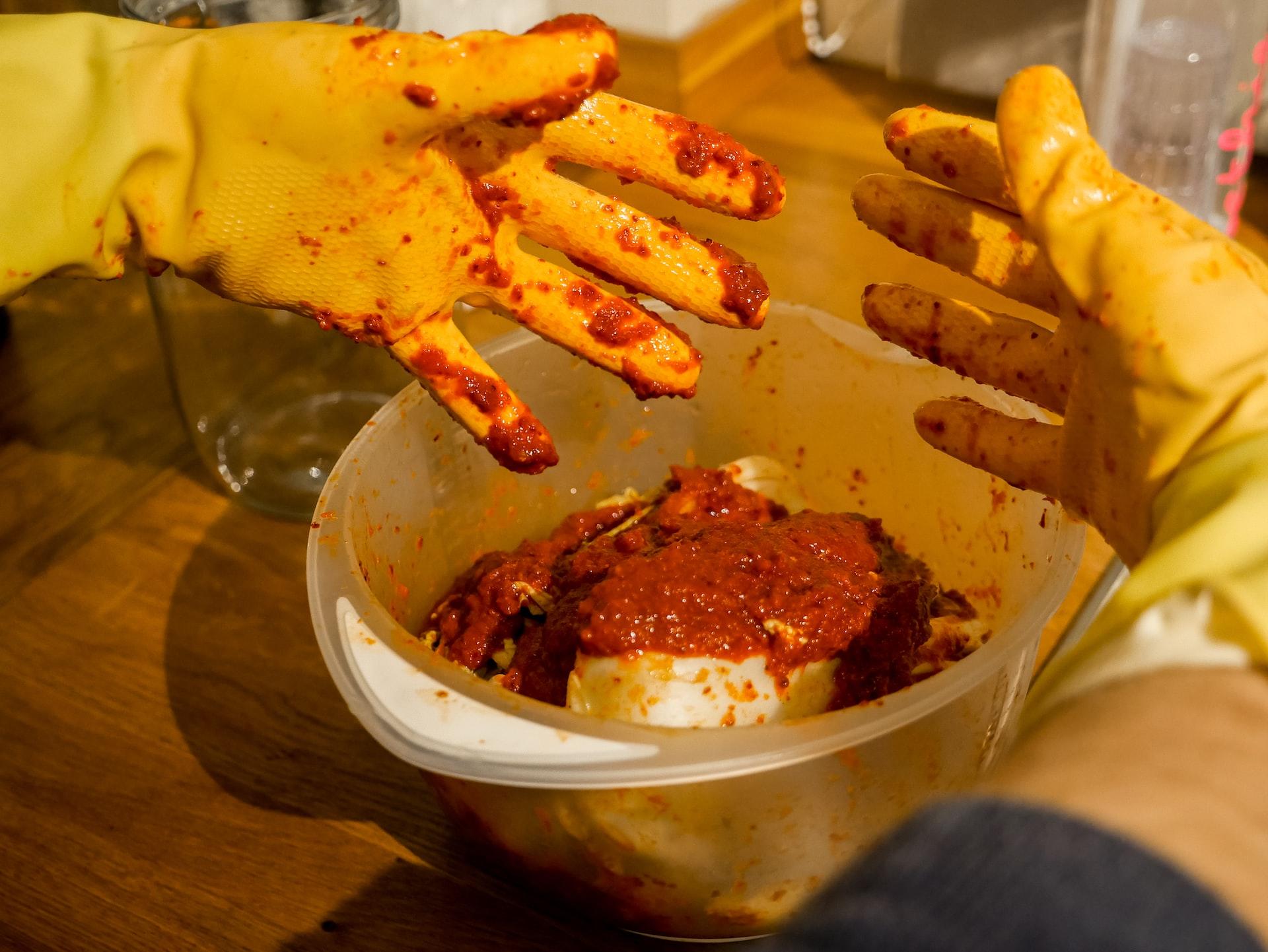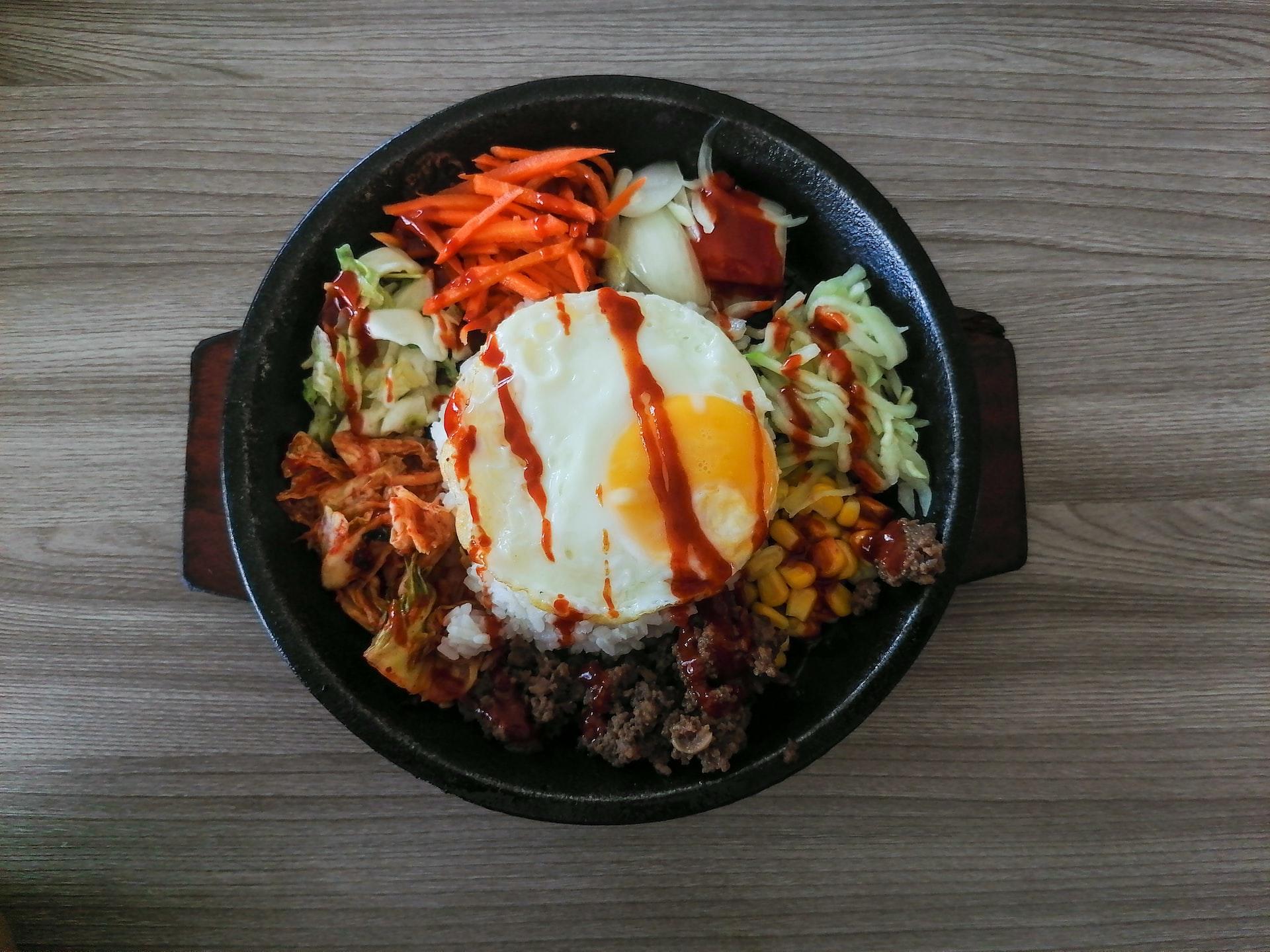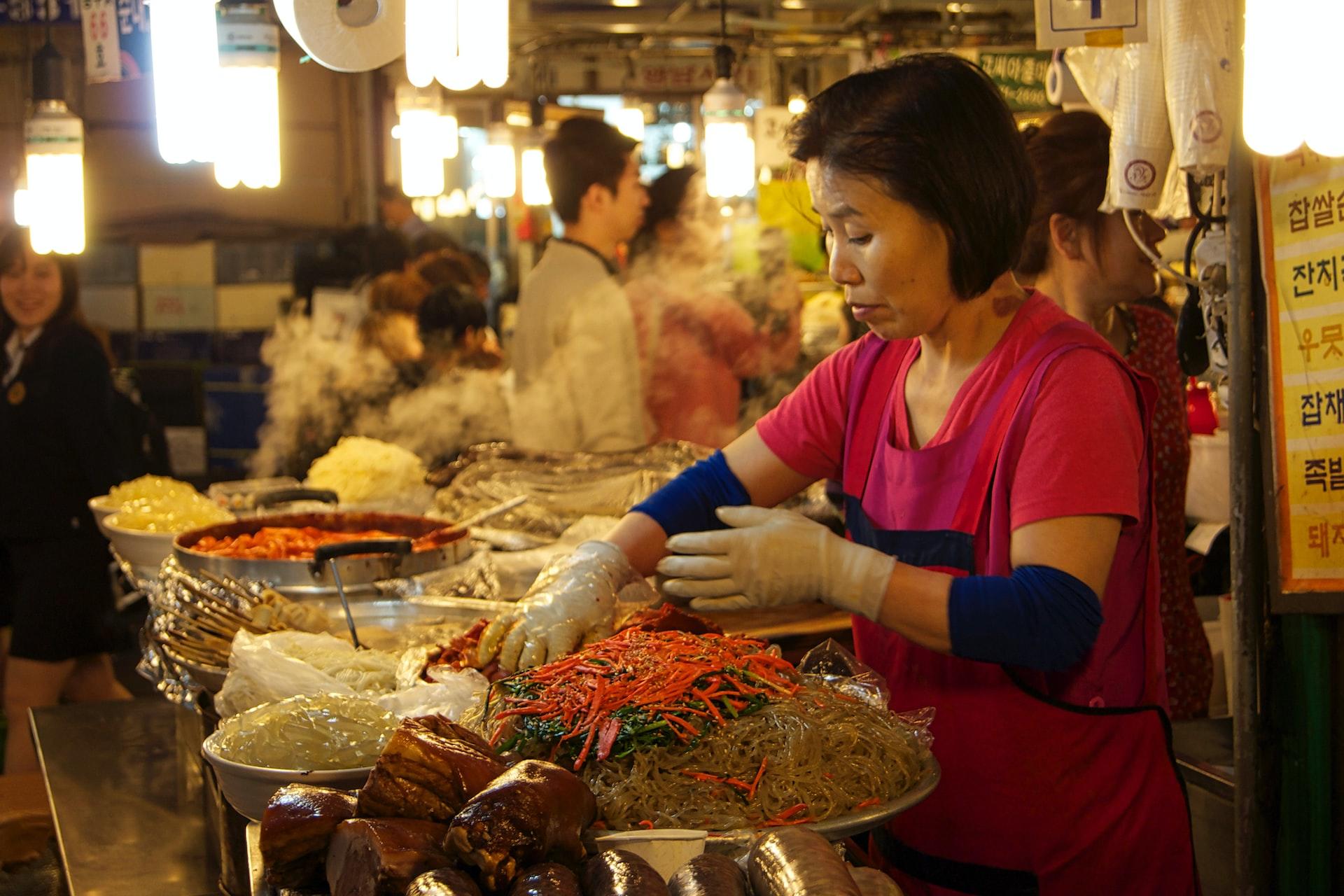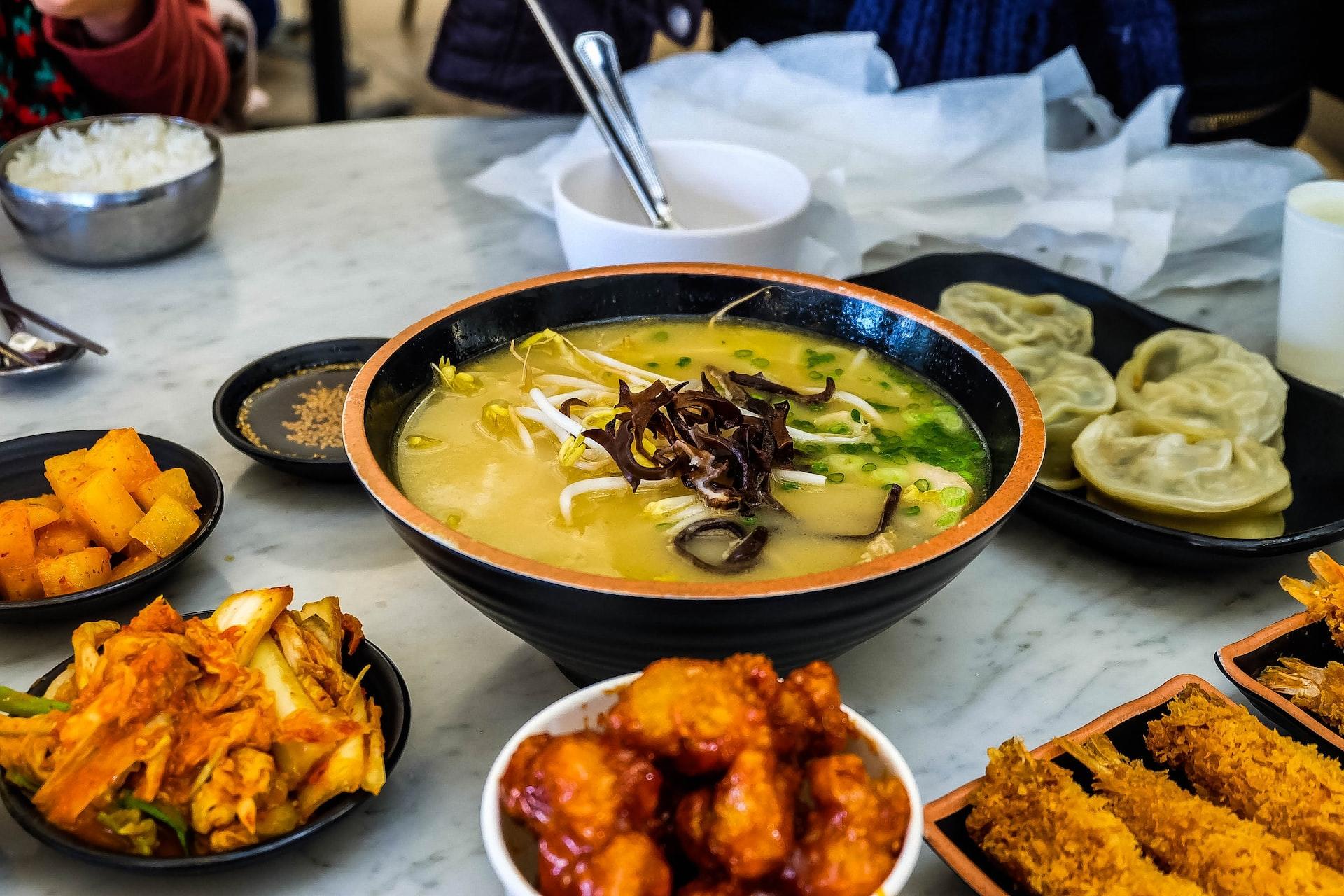If you had to name a traditional food in whichever part of the UK you live, what would it be? Haggis, Shepherd's pie, Bara lawr or Toad in the Hole? Around the world, the UK is renowned for fish'n'chips, bangers'n'mash and Yorkshire pudding. And the baked beans and Weetabix controversy isn't so far behind us that the uproar has completely faded.
In many parts of the world, our part included, certain foods belong with certain meals. Baked beans notwithstanding, we tend to have specific foods for breakfast, others for lunch and yet others for dinner. By contrast, people on the Korean peninsula enjoy the entire range of Korean foods at every meal. So let's talk about
- typical dishes that grace every South Korean table no matter the time of day
- Korean dishes everyone should try
- Korean food for specific health conditions
- the most famous Korean dishes
- Korean street food
No other country could claim spotted dick as a cultural symbol. Likewise, foods eaten across the South Korean peninsula are integral to Korean culture. As the west becomes ever more enthralled by all things Korean - music, films and dramas, sampling Korean food is the next logical aspect of Korean culture to explore. Here we go; do you have your chopsticks and spoon ready?

Traditional Korean Food
The traditional Korean diet revolves around rice. vegetables and fish. A craving for meat seems to have become a trope in Korean films and dramas. Sometimes, pork belly wraps, called bossam, very nearly get a starring role. But the type of meat dishes we're used to eating - roasts and grilled slabs of meat, typically do not feature in Korean traditional cuisine.

Beyond those staples, traditional cuisine on the Korean peninsula is organised by colour. White, black, red, yellow and green each characterise a health benefit, a direction and/or natural element.
Besides providing abundant vitamins and minerals, these aspects relate to ancient ideas about a person's spiritual and physical makeup. We'd have to dive deep into Korean culture to understand food colours' significance. For now, let's just say that traditional Korean people select their foods based on what their qi (chi - life force) dictates.
Banchan is the crucial concept that shapes Korean meals. Steamed rice and soup form the hub around which the side dishes - banchan are placed. These typically include pickled radishes, red chili paste and/or soy sauce, depending on the meal.
Banchan are shared with everyone at the table, as is a more hearty type of stew called jjigae. You may also find a meat dish for all to share. Galbi (lit. rib) and bulgogi (lit. fire meat, meaning grilled meat) are popular choices.
No Korean meal would be complete without kimchi, a food known for its anti inflammatory properties. This fermented cabbage dish is probably the most renowned of all Korean banchan. This famous Korean food comes in many flavours.
Some Korean people make kimchi with radish while others prefer using just Napa cabbage. They may season their kimchi with spicy chilli powder, garlic, spring onion and ginger. Jeotgal (lit. spicy seafood) is another heavy favourite among kimchi makers. But not all kimchi is spicy; if you'd rather sample a milder type, ask for baek-kimchi.
Dairy products typically do not feature in the traditional Korean diet. These days, people all over South Korea sip banana milk and enjoy ice cream. And among the younger set, pizza is all the rage - the more cheese, the better.
But not so long ago, cheese was considered the most disgusting of substances. Milk production for human consumption didn't actually become a thing until the 1970s in South Korea.

Popular Korean Dishes
Like fashion tastes, preferred music styles and even favourite songs, what's popular for some might be reviled by others. We'll be as objective as possible with this segment of our Korean food list. Be sure to let us know if we mentioned your favs. And in the comments section, feel free to add the dishes we left out.
We should probably start with jjajangmyeon, a dish that makes frequent appearances in Korean television shows. It consists of a thick brown sauce called chunjang, served over noodles. Chunjang can be sweet, savoury or mild in flavour. For this dish, small bits of meat - pork or beef are stewed in and handful of vegetables get tossed in much later in the cooking.
The trick to truly enjoying that dish is eating it hot. When it cools down, the sauce tends to get sticky and it won't mix well with the noodles. If you'd rather eat something more festive, give chimaek a go. This word combines chicken - a loanword in the Korean language, and beer (maekju).
Chimaek is a staple of anju feasting. Anju means 'food with alcohol'. You may order the plain or spicy variety of chicken. Other types of snacks feature, as well.
If jjajangmyeon must be eaten hot, ganjang gejang is the perfect dish for hot days. Crab meat is marinated either in soy sauce or a chilli pepper sauce and eaten cold. Western palates have a hard time adjusting their taste buds to this dish because it is very spicy and bitter. But it is wildly popular among South Korean people.
Soups: Best Korean Foods
If you've ever watched a South Korean show, you've probably heard of hangover soup. Anju is a popular way to spend an evening with friends so it's a good thing that there's haejang-guk to remedy its effects. It generally consists of cabbage and other vegetables with meat simmered in beef broth. Variations include seonjiguk (with congealed ox blood) and sundaeguk, the soup with a type of blood sausage.
Ox bone soup (seolleontang) might come the closest to what westerners are used to eating. Its minimal ingredients list makes it easy to prepare. Simply boil ox bone chunks for hours to extract all the nutrients, and then add salt, pepper, scallions and garlic, bits of meat or a few noodles. It's typically served plain so diners can season it to their liking with banchan.
If you've just figured out your age according to the Korean ageing system, you might treat yourself to a bowl of miyeok guk. Seaweed soup is the traditional breakfast Korean people eat on their birthday to give thanks to their mothers. According to legend, this soup honours the goddess Samsin, who helps women into motherhood. Thus, new mothers eat this soup for several months after having their babies.

The Best Korean Food: Street Food
Any visit to South Korea must include visits to vendor stalls. That's where you get all the fried and steamed goodies; it's also a good place to enjoy anju with friends. Our first fav in this category isn't exactly street food but you can eat it on the go.
Bibimbap has to be one of the best dishes to sample. Originally, it was a dish meant for royals but today, anyone can enjoy this rice bowl. It's laden with fresh ingredients and flavoured with chili paste.
If you're not a bowl-on-the-go type of person, maybe gimbap (also called kimbap) is the treat for you. If you like sushi, you'll love this glutinous rice roll. You may like your gimbap stuffed with meat, fish and/or vegetables, all wrapped up in a sheet of seaweed. If you're in Seoul, be sure to try their triangle gimbap, for sale in most convenience stores.
With all the talk about chili paste and spiciness, you might have guessed that South Koreans like their food on the fiery side. If you do too, then you must try tteokbokki. It's longish, non-glutinous rice cakes simmered in a chili paste sauce.
If you'd rather have the non-spicy version, you should order gungjun-tteokbokki. It is simmered in a soy sauce concoction. Boiled eggs, scallions and fish cakes are common tteokbokki ingredients.
Speaking of fish cakes... Have you thought about trying eomuk? These South Korean fish cakes are so versatile they can be boiled, steamed, fried, served in soups and eaten off skewers. You can even use this ground-up fish paste to make gimbap.
You can get a deep-fried fish cake called hotbar, but only when it's cold out. Eomuk vendors usually have their own recipes and presentation. You may have to visit many such food carts to try as many as possible.
Bread is a fairly recent addition to South Koreans' diet. The street food scene is making the most of it with egg bread (gyeran bbang) in the winter. Otherwise, you might enjoy 'street toast', available year-round.
Street toast is basically an overstuffed toasted sandwich. Filling ingredients include sliced beef or pork, chicken, cabbage and other vegetables, and fried eggs. Egg bread consists of an egg baked inside a small bread roll. Street vendors may top their egg bread with anything from shrimp to chopped herbs.
Ah, Korean cuisine! The most famous Korean people sing its praises and we've barely scratched the surface of all the delight to be had. Soft tofu soup! Omelette rice! Glass noodles fried in sesame oil! Could you forgive yourself if you never try kimchi stew?















